Monastic tea - a panacea for all diseases? Overview of prescriptions and doctor's opinion
Monastic tea - a panacea for all diseases? Overview of prescriptions and doctor's opinion
Now monastic tea has come into fashion. Maybe it will become a panacea? In the lexicon of a modern person discussing medical topics, this well-known word is often heard - a panacea, by which we mean a cure for all diseases. Probably, most readers know its origin, however, it may be useful to recall how this word appeared.
The Roman god of healing Aesculapius had two daughters who possessed the gift of healing: the arrogant Panacea, who took it upon herself to bring the only medicine that could cure any disease as a gift to humanity, and the sensible shy Gigia, trying to keep her sister from such impudent statements.
The sisters went on different paths: Panacea, whose name has become a household name, treats people with pills and mixtures, continuing the search for one universal medicine, and Gygia preaches a healthy way through the knowledge of the Laws of Life. The paths of sisters in modern medicine often intersect and for some people go in parallel.
To believe or not to believe?
Patients among potential buyers of the panacea for all diseases, which monastery tea has become in our time, are divided into several categories.
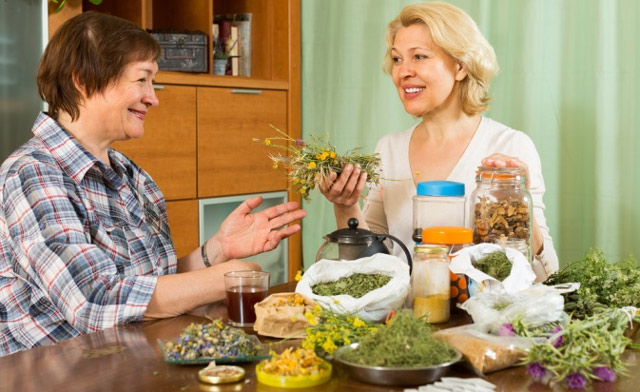
Some people trust everything they hear even from acquaintances, even on the Internet, even in popular television shows that have chosen medical topics. They swallow everything that is advertised, trying to follow fashion trends and constantly hoping for a miracle to lose 20 kg in a month or to cure prostatitis with the help of medicinal tea.
Others unconditionally trust the Internet, believing that it will provide health and well-being, but are skeptical about the recommendations of "knowledgeable people" who have tried the miraculous properties of the new medicine "on themselves."
Still others turn only to the advice of traditional medicine, and orders on websites are treated with caution, realizing that blind faith can end not only with a “pig in a poke”, but also with the loss of precious time in serious cases.
Fourth do not accept everything and everyone, believing that the disease is not worth attention and will somehow "resolve" itself. As a rule, these are the group that ignores a healthy lifestyle, diets, dietary supplements, and the like. It is especially difficult for distributors of various "novelties" to work with them, since it is difficult to breed them even for a really worthwhile medicine.
Perhaps the monastic collection really is a good remedy for prostatitis, hypertension, osteochondrosis and many other diseases, however You can learn the truth about monastery tea only by thoroughly studying its composition. It is naive to believe that the same herbs are suitable for all diseases, therefore, before ordering a new product, the price of which is not so low (basically, it costs 990 rubles with the so-called 50% discount), we will try to analyze the therapeutic effect of the drink in terms of the healing properties of its components. Let's start with the most popular fees among the people - reducing weight.
Monastic tea for weight loss: did the monks really struggle with being overweight?
According to the reviews of virtual patients, the monastic collection is an excellent tool for losing weight. Skeptics, probably, will not fail to notice that the monks had no reason to struggle with excess weight, given the multi-day fasts and far from idle pastime (prayers, work in the holy monastery, where daily bread was grown and produced by the hands of novices). Meanwhile, fasting already implies abstinence and purification.
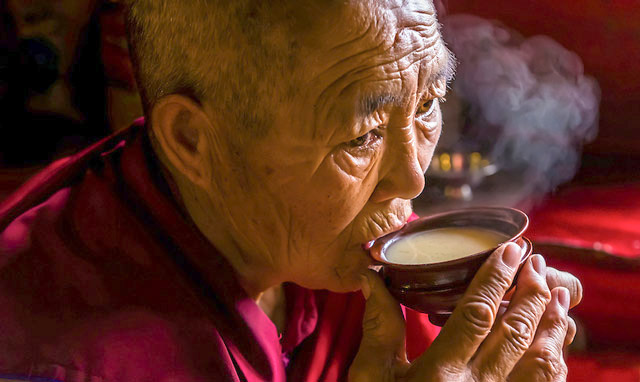
Fasting days are easily experienced, and sinful thoughts are not visited if, instead of fast food, you use a drink made from herbs donated by nature, which heals not only the body, but also the soul. The composition of this medicinal tea includes plants collected in the vicinity, where the monastery stands, dried and mixed in certain proportions. To date, the most popular on the Internet are two options for the monastic collection for weight loss, which are given below.
Recipe one
According to the statements of tea sellers from the Internet, the collection for weight loss was born "in the depths of the St. Elisabeth Monastery", which is located on the outskirts of the Belarusian capital. It consists of seven types of medicinal plants:
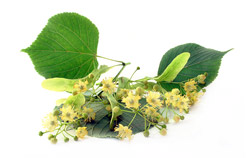
Recipe two
This recipe for monastic tea from Belarus, judging by the advertisement, was also found in the St. Elisabeth Monastery (Minsk, Novinki), but in its composition it differs markedly from its predecessor.
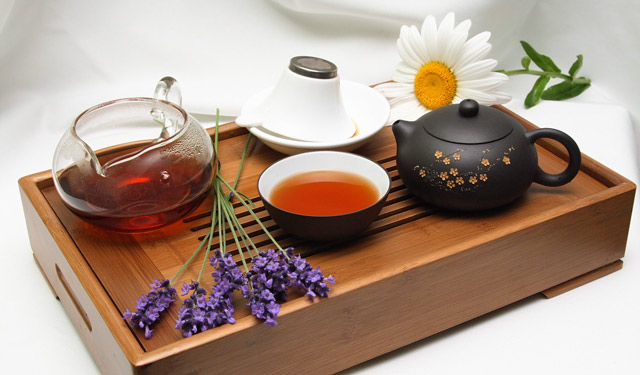
Common to them is the presence of elder flowers in the composition and instructions on how to make monastic tea in order to lose weight by 15 kg in 2 months “on full automatic”, without making any effort. Well, let's try to deal with this monastery tea, composition and reviews on it. Monastic tea from Belarus is represented by a collection of 10 plants:
- Birch. The young leaf of this tree has an anti-inflammatory, bactericidal, diuretic and slightly choleretic effect. It does contain vitamins of groups B and C, which to some extent classifies it as an immunomodulatory agent, but slimming teas use a diuretic and not pronounced laxative effect of the leaves, due to which they remove toxins. Whether birch leaves are able to quickly burn existing fat is still unknown to science;
- Calendula. The use of calendula flowers is widespread not only in folk medicine, because since ancient times it has been noticed that this plant can disinfect and heal wounds, prevent the development of inflammatory processes, kill some microbes, and, in addition, calm the nervous system, reduce excitability, so these advantages of calendula formed the basis for the production of many pharmacological preparations. As far as the flowers of the plant are capable of giving a feeling of fullness, reducing appetite, one can argue ad infinitum, because they have a completely different purpose, but calendula should not be excluded from the general strengthening collection. In the composition of vitamin tea to increase the body's defenses, calendula will look beneficial;
- Strawberry. Strawberry leaves give the tea drink an exquisite taste and aroma. Due to the high content of vitamins and other useful substances, they have a lot of advantages: , fight against, suppress inflammation, calm the nervous system, strengthen and tone the body. Like many other herbal components of slimming teas, they have diuretic and diaphoretic properties, which contribute to weight loss. Strawberries are good for everyone and, perhaps, loved by everyone, but there is one “BUT” - it belongs to strong allergens, so people with individual intolerance should better forget about it;
 Sweet clover. The positive participation in the treatment of diseases of the central nervous system, the hematopoietic system, the heart and blood vessels of such a substance as coumarin, which forms the basis of the medicinal properties of the honey plant - sweet clover, is difficult to dispute, but for weight loss sweet clover is good because it has diuretic and diaphoretic properties and helps, together with other herbs, to lose a couple of kilograms;
Sweet clover. The positive participation in the treatment of diseases of the central nervous system, the hematopoietic system, the heart and blood vessels of such a substance as coumarin, which forms the basis of the medicinal properties of the honey plant - sweet clover, is difficult to dispute, but for weight loss sweet clover is good because it has diuretic and diaphoretic properties and helps, together with other herbs, to lose a couple of kilograms;- The same purpose (diuretic, laxative) in tea for weight loss and in nettle dioecious - plants with unique medicinal properties. Due to its rich composition, nettle is also considered a valuable food product. It contains an impressive part of the table of D. I. Mendeleev (iron, boron, nickel, manganese, copper, etc.), as well as proteins, fats, fiber, organic acids and, most importantly, vitamins: C, B, K. By consuming nettle, one can hope that the most rigid diet will not be terrible, since it will take over providing the body with the necessary material;
- Spiraea. A wide range of applications and meadowsweet (meadowsweet), included in the list of substances used by the official pharmacopoeia. Here, bactericidal, anti-inflammatory, and anticonvulsant properties are noticed, and the ability to activate metabolic processes is taken into account, but in slimming tea, the main emphasis is on the ability of the meadowsweet to “break through sweat” and then feel better;
- Rose hip. Its fruits can not be advertised, even a child knows that it is a storehouse of vitamin C and a powerful antioxidant. Of course, its consumption will help to cope with the stress caused by the loss of kilograms, support the immune system and generally strengthen the “suffering body”, therefore, if you find floating rose hips in the resulting tea, you can suspect that you managed to order exactly what you need;
- currant leaves help to remove toxins, toxins, stool and fluid in the same way as other herbs that make up the monastery tea, however, being a high-vitamin remedy, currant can stimulate the immune system, improve the quality of metabolic processes and generally heal the body. The ability to equalize the hormonal background is perhaps too exaggerated, therefore, in case of hormonal imbalance, it is better for the patient to listen to the opinion of the doctor than to rely on the miraculous properties of monastic tea;
- Elecampane, like nettle, meadowsweet, sweet clover and other medicinal plants, it is accepted by official medicine for the treatment of diseases of the respiratory system, skin, and gastrointestinal tract. However, the inventors of the weight loss supplements, most likely, took into account the diuretic and choleretic abilities, as well as the high content of vitamin E, which slows down the aging process, for which he got into the prescription of a new means of combating excess weight;
- Elder plays a similar role, that is, it removes liquid along with grams-kilograms.
Analyzing recipes for weight loss
Obviously, the main emphasis in the selection of herbs for weight loss is on diuretic and laxative properties, so it is not surprising to lose a few kilograms due to the loss of water and feces. And if you still stick to a diet and provide yourself with physical activity, the result will be even better.
Undoubtedly monastery tea, containing mainly laxative and diuretic herbs, helps to cleanse the body, removing toxins, regulating digestion, but it also helps to remove very necessary trace elements and vitamins, which should not be forgotten while drinking tea. This is especially true for people who settled on tea prepared according to the first recipe, while the second, representing monastery tea from Belarus, was selected more attractively in terms of vitamins and microelements. Besides, it would be unwise to sit on monastery tea for a long time, hoping only with his help to maintain harmony and lightness. It would be good to develop a long-term diet for yourself, decide what you can eat and what to avoid, learn a few exercises to maintain physical fitness.
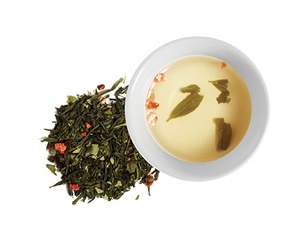 The statements of manufacturers and distributors of medicinal tea are also doubtful in relation to the regulation of hormonal status. Such abilities are attributed to linden blossom, black elderberry, currant and some other plants, but such axioms should be alarming. The regulation of hormonal levels is a delicate matter that requires the participation of specialists, so it is better for patients themselves not to be led by such advertising and not to engage in amateur activities. In addition, the participation of these particular plants in balancing hormonal imbalances has not yet been proven.
The statements of manufacturers and distributors of medicinal tea are also doubtful in relation to the regulation of hormonal status. Such abilities are attributed to linden blossom, black elderberry, currant and some other plants, but such axioms should be alarming. The regulation of hormonal levels is a delicate matter that requires the participation of specialists, so it is better for patients themselves not to be led by such advertising and not to engage in amateur activities. In addition, the participation of these particular plants in balancing hormonal imbalances has not yet been proven.
However, the positive effect of weight loss fees on the gastric mucosa, liver, blood vessels, and heart muscle is obvious, so the instructions for tea for weight loss indicate its such a comprehensive effect (it will lower blood pressure, cure the stomach, help the liver cleanse).
Monastery tea for alcoholism: they say that there are no former alcoholics...
Our people love sensations, here is the monastery tea and got to bad habits. People are looking for teas for alcoholism, smoking and some other addiction. Probably, patients of narcological departments and their relatives have repeatedly heard that it is impossible to completely cure alcoholism with anything.

The trigger for the resumption of the process will be the first glass after a long abstinence, which will help the body remember, it would seem, completely forgotten sensations and past "exploits". However, it would be wrong to think that a person cannot be saved, unless, of course, he has reached the level of obvious degradation. To return to the family, to work, to a full life, many means can help, including specially selected collections of medicinal plants. The main thing is that the “tied up” understands: he will buy himself tea for alcoholism, but still he will never again be able to painlessly celebrate holidays on a grand scale or flood grief.
The monastic collection from alcoholism will help to forget the past, improve metabolic processes, increase immunity, and restore (as far as possible) the functions of the affected organs. The main thing is that the person himself does not resume not only abuse, but also use in general.
Unfortunately, no doctor can reassure the patient and his relatives in terms of a complete cure, but if the anamnesis is already burdened, then you should at least try to cope on your own, without bringing the situation to a protracted binge and severe hangover syndrome. For example, if you feel an irresistible attraction to buy a bottle, you need to gather your last strength and drink tea, which includes herbs that relieve this desire. Well, if a breakdown has already happened, then, waking up with a heavy head, do not think how to “drive for a beer”, you need to brew tea for yourself from alcoholism and endure a little - the next day will again be clear and bright.
We can say that the following tasks are assigned to the monastic tea from drunkenness:
- Weaken cravings for alcohol and force the patient to stay at home instead of running to the store for "medicine";
- Normalize blood pressure, which "after yesterday" probably increased;
- Cope with excruciating pain in the head by relaxing spasmodic blood vessels;
- Remove under-oxidized decay products of alcoholic beverages, toxins and slags formed as a result of "brute force";
- Prevent the development of serious consequences of alcohol intake (convulsive syndrome, psychosis, cardiac pathology, pancreatitis, etc.).
Of course, monastery teas, for example, for weight loss and alcoholism will differ in their composition. If in the first case, plants with a laxative and diuretic effect predominantly act, then in the second, undoubtedly, they should take their place. compounds that protect organs that suffer primarily from the harmful effects of alcohol.
What is so miraculous about this tea if it is able to perform such complex tasks? And the point is in its composition, which, however, may vary somewhat from different manufacturers, so it makes no sense to list everything. It can be like this: 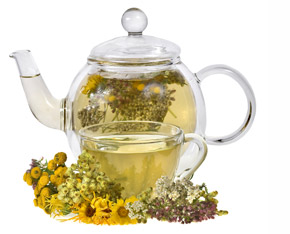
Or like this:
- St. John's wort;
- Eucalyptus;
- Black currant;
- Thyme (by the way, it reduces cravings for alcohol);
- Rose hip;
- Hawthorn;
- Chamomile;
- Spiraea.
The collection can be supplemented with yarrow, sage, immortelle, butterbur. It is good when the composition of tea for alcoholism includes herbs that have a beneficial effect on blood vessels and calm the nervous system (oregano, calendula, hellebore).
I don’t want to give hope in vain to a patient who is shaking from a hangover after a many-day binge, at such moments it is better to seek help from a narcologist, because only he has drugs that relieve severe withdrawal symptoms, which can turn into very sad consequences. But monastic tea for alcoholism can be effective if a person decides to stop drinking, but for some reason, traditional methods of treatment (coding, the introduction of the so-called "torpedo" or sewing in "ampoules") are rejected. Of course, if you have confidence in your own willpower, you can try and start the course.
By the way, such tea, for sure, will be useful for people who are not addicted to alcohol, but simply do not know how to calculate the dose or strength during any event. Anything happens and happens to many, so it’s good if there is such a seagull in the house.
Monastic tea from smoking: is it easy to quit smoking?
As Mark Twain argued, quitting smoking is easy, because the writer himself quit a hundred times, so he experienced all the torment from his own experience. For those who have decided to take such a responsible step in their lives, modern medicine offers many different "tricks" that try to deceive the body (chewing gum, lollipops, pills and even books). However, not everyone manages to forget about a pleasant relaxing puff if she starts to dream at night. True, some people give up a bad habit due to illness (often myocardial infarction), they usually quit once and for all - because you want to live.

Whatever the reason for the transition to a healthy lifestyle (even an argument with a friend), it is one thing to say, another thing to do. The formed addiction every minute reminds of itself and the person loses the ability to focus on other things. Trying to somehow fill the smoking break and calm the soul, some begin to eat more. The result is a noticeable weight gain. Among other things, the body cannot help but experience stress, so a person becomes nervous and irritable.
It is unlikely that the ancient Belarusians were so worried about the issue of nicotine use in its current form, but there is a monastery tea from smoking, and attribute its origin to the fields and meadows of the "blue-eyed republic".
Tea from smoking should be drunk for several weeks (the main thing is to endure). During this time, he will not only “turn away” from cigarettes, but also cleanse the body.
The recipe for monastery tea, which helps to get rid of a bad habit, includes various herbs:

Like other monastic drinks, smoking tea may contain other herbal ingredients.
The most interesting thing is that the distributors of monastic tea recommend starting its intake as soon as a person feels symptoms of the presence of extraneous "creatures".
Monastic tea, which kills living beings that are unnecessary to the body, is gaining more and more popularity, since it consists exclusively of plant components and does not contain “chemistry”.

Most often, people hear helminths that annoy in childhood. These are pinworms that live in the lower intestines and lay their eggs in the rectum. Pinworms cause a disease of “dirty hands” (enterobiosis), which often, if not always, occurs in children due to the special curiosity of babies and their inability to fully comply with the rules of hygiene. However, you can imagine what you need to drink in order to it reached such distant places unchanged and killed the little fidgeting worms. Thank God, the times have gone into oblivion, when all the worms were often poisoned with piperazine, they did enemas with garlic and incessantly ironed linen. Now there are drugs that dissolve these nematodes and do not require additional measures.
It is well known (also from childhood) and such a helminthic invasion as ascariasis. Roundworms are relatively large roundworms, they can do a lot of trouble, migrating almost throughout the body. In any case, they move freely along the gastrointestinal tract, crawl into the respiratory tract, their larvae can be found in the nasopharynx and organs of the genitourinary system.
- yarrow;
- Chamomile pharmacy;
- Tansy;
- Sage;
- Repeshok;
- Peppermint;
- Oak bark;
- Calendula;
- birch leaves;
- Dried sushi.
The main emphasis as an antihelminthic in the composition of the monastery collection falls on tansy, which is contraindicated in childhood, with hypertension, urolithiasis and cholelithiasis, and wormwood, also having a number of contraindications (anemia, allergies, pregnancy and lactation). Children under 2-3 years old should not eat peppermint and oak bark, and this list is completely reduced for allergy sufferers, as well as pregnant and breastfeeding women.
Tea for insomnia: healthy sleep and a strong nervous system
When you always want to advise you to drink monastic tea, which is called “Healthy Sleep”. In view of the fact that sleep at the present time is upset not only among the elderly, but also among young people, you should not rush to “sit down” on addictive drugs, so at first the monastery collection or other medicinal tea from specially selected products will be just right. That is, in this case, the opinion of the manufacturers most of all coincides with the opinion of the doctor.

A drink designed to calm the nervous system and ensure normal rest has approximately the following composition:
- Melissa;
- Oregano;
- Rose hip;
- Hops (cones);
- Peppermint;
- Motherwort.
Tea to improve memory and brain function
To improve memory and brain function, monastic tea is mainly taken by practically healthy people, mostly employed in professions that require considerable mental stress. Although pensioners who want to prolong mental clarity for as long as possible, they also often resort to herbal remedies that can allow them to work intensively with their heads. In general, readers themselves are well aware of this tea, as evidenced by its growing popularity day by day.
The monastic collection for the brain and memory also has a considerable list of herbs, but the person who purchases the drink should be aware of the attitude of his body to the individual components (is it possible individual intolerance or other contraindications?):

Monastery tea for vision
Unfortunately, we remember this important organ only when everything begins to blur before our eyes, it is difficult to read the prices in the store or make out the number plate of an approaching vehicle. Many sites or acquaintances immediately offer monastery tea. Without detracting from its merits, nevertheless, for a start, I would like to advise you to contact an ophthalmological office and listen to the opinion of a doctor. Perhaps the decline in vision is not due to age or excessive stress? However, if the doctor nevertheless considers age-related changes or constant eye fatigue to be the cause, then, probably, monastic tea to improve vision will help delay the onset of dependence on optical devices.

The monastic collection, which helps to make the surrounding objects clearer and more expressive, may consist of various herbs:
- Chamomile;
- sage;
- Resin;
- Blueberries (perhaps even children know how blueberries are good for vision);
- Eyebright (this ubiquitous herb has been used for centuries to treat eye diseases);
- barberry;
- motherwort;
- Lemongrass;
- Raspberries;
- St. John's wort;
- Rosehip.
Monastic tea for diabetes: can diabetes be cured once and for all?
can be healed! This is strongly said. The opinion of a doctor on one of the sites is interesting, which does not recommend his patients to listen to the advice of traditional medicine, orienting them to the acquisition of folk remedies. Probably, nevertheless, we are talking only about type II diabetes, because the first one takes only insulin, and treatment with monastic tea instead can significantly harm the patient.
Diabetes is one of the most acute problems of our time, but here, it turns out, everything is so simple: I ordered monastic tea, drank it for 3 weeks, everything was gone. Diabetes is a polyetiological disease, a genetic predisposition has already been proven, but many causes remain “behind the scenes”. And it is clear that this disease, namely: diabetesIItype, you can slow down by dieting and drinking medicinal herbs, but, unfortunately, completely cured until.
It is possible that a set of herbs is able to lower blood sugar, improve the well-being of a diabetic, and solve other problems along the way, but cannot take on the mission of completely eliminating diabetes, therefore a patient who uses tea will still have to:
- Follow diet number 9;
- Control blood sugar;
- Visit an endocrinologist;
- Get a medical examination.
Any other behavior would be simply unreasonable, for tea is not a substitute for insulin.
It is advisable to use monastic tea for diabetes in conjunction with other activities aimed at an excessive increase in blood glucose, leading to various complications. It is likely that, By constantly drinking medicinal tea, eliminating products that are harmful to a diabetic, you can hold out for a long time without resorting to the help of pharmacological agents.. In addition, we can only talk about a type 2 disease, with the first such options will definitely not work.

The recipe of the holy places of Russia is a set of widely used herbs known as wonderful healing agents:
- Rose hips and roots the healing qualities of which no one doubts, they are described earlier in tea for weight loss;
- Oregano, containing tannins, essential oils, ascorbic acid, for the set of its unique composition can in some cases even compete with antiallergic drugs and antibiotics, replacing them. It has a tonic and stimulating effect, has a diuretic, carminative, anti-inflammatory effect;
- St. John's wort. St. John's wort is known and recognized not only in folk medicine, but also in official pharmacology, used in the treatment of a wide range of kidney and heart diseases, inflammatory processes, depressive conditions. St. John's wort contains a lot of useful microelements, tannins, vitamins A, C, PP and, as far as possible, will help reduce blood sugar, but the plant is not able to completely replace the work of the islets of Langerhans, which form insulin, despite its sonorous name and a well-chosen combination with other herbs;
- Black tea, store bought, which they say can be replaced green, is also part of the medicinal drink. Most people already use it daily, but perhaps with medicinal herbs, its effect will become more noticeable.
Tea for diabetes from Belarus (monasteries of the Vitebsk region) is distinguished by an expanded composition, which, in addition to oregano, St. John's wort, rose hips and tea from the store, is also represented by other gifts of Belarusian nature:
- Healing moss;
- Blueberry;
- Burdock felt;
- Dandelion;
- Thyme;
- Chamomile;
- White mulberry;
- Jerusalem artichoke;
- Cuff;
- goat's rue;
- Chernogolovik.
The list, of course, is impressive, promising:
- Strengthen blood vessels;
- Reduce sugar;
- Increase the body's resistance to various infections;
- Regulate metabolic processes, the work of the digestive tract, weight.
Most likely, it will be so, the tea is good, restorative, it will fulfill its task in this regard, but it will not be able to completely forget about diabetes, therefore, the patient, having a refined diagnosis (diabetes mellitus), should not completely relax. The disease will return as soon as the person finishes drinking the healing drink.
The price of monastery tea for diabetes with a 50% discount is 990 rubles. In order not to run into a scam and not get a “pig in a poke”, it is advisable to order it on trusted sites, having previously studied the composition of the product, otherwise they will send a “black long leaf” ...
Monastic tea will relieve hypertension?
The instructions for monastery tea for hypertension (arterial hypertension) indicate that the disease can be completely defeated, since the collection not only normalizes pressure, strengthens the walls of blood vessels, prevents the occurrence, or, with which, in general, one can agree. However, as the same instruction says, it also eliminates the causes of arterial development, moreover, we are talking about grade 2-3 hypertension, when atherosclerosis has affected the vascular walls significantly.

Based on the composition of tea, there is no doubt that it has a positive effect on the functioning of the heart, brain activity, and the function of the digestive system. The monastery tea for hypertension includes such wonderful and commonly available herbs as:
- Rose hip;
- St. John's wort;
- Elecampane;
- Oregano;
- Motherwort;
- Aronia;
- Hawthorn;
- Black tea.
Undoubtedly, this collection helps to fight arterial hypertension and other vascular problems, using it constantly, in some cases you can refuse to purchase drugs that reduce blood pressure, but you should not drink tea for a week and hypertension will remind you again. Atherosclerotic plaques deposited on the walls of blood vessels will not dissolve and will not go anywhere. Sadly, but this fact should be borne in mind. Monastic collection can be advised by specialists, any doctor knows how difficult it is to choose a drug that reduces (to normal!) Blood pressure and, since a set of medicinal herbs can replace constantly taken pills, then why should the doctor's opinion be different. Another question is how much monastic tea will cost for the patient, because you need to drink it all the time. If the collection is enough for consumption for 3 weeks (990 rubles), then will the salary be enough, and even more so the pension?
Hearty monastery tea
The distributors of hearty monastic tea are not cunning, claiming that it helps to cope with the problems that have befallen the cardiovascular system, that is, it helps, and is not taken in a jiffy, to solve them once and for all. People suffering from such diseases probably know that many heart preparations are made on the basis of plant materials. Why not make tea from the same plants without turning them into pills? Both tasty and pleasant.
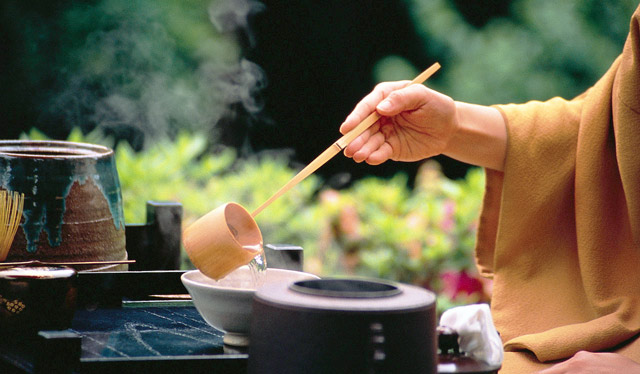
A specially selected and properly composed hearty monastic tea can unobtrusively help a person fight, strengthening health, regulating blood pressure, and evening out the pulse. However, it cannot be said that “a young heart will invest tea, an old heart in return”, the patient will have to live with his own, but perhaps the healing collection will help prolong this life. It consists of a long list of medicinal herbs:
- Valerian;
- Peppermint;
- Hawthorn;
- Meadowsweet or meadowsweet;
- Rose hip;
- Horsetail;
- Motherwort;
- Melissa.
Some of the herbs listed have already been found in other monastic collections, and the reader has a rough idea of their best qualities. Together, these plants enhance each other's action, improve the nutrition of the heart muscle, calm the nerves, strengthen the vascular wall, relieve vasospasm, and reduce pressure.
Monastic collection will cleanse the liver and ...
Treatment with monastery tea is very popular for diseases of the liver and stomach, which is not surprising, since these organs are most accessible to any influences, harmful and beneficial. Like pharmacological agents intended for the treatment of the cardiovascular system, drugs that help with disorders of the digestive system are also often based on a plant component.

The liver is a very sensitive organ, it reacts to the bad, it also shows the ability to quickly recover when the influence of the harmful factor ends. However, this does not mean at all that, by neutralizing poisons, she can withstand everything without needing purification. Monastic collection is well suited for the restoration of a slightly damaged liver and helps an organ affected by hepatitis, cirrhosis or (God forbid) cancer to cope with its task for some time. Of course, with hepatitis, you can count on a significant extension of life. The composition of the liver collection includes plant components that cleanse and heal the liver, have anti-inflammatory, antispasmodic, diuretic and choleretic effects:
- Elecampane;
- Chamomile;
- Corn silk;
- Calendula;
- Peppermint;
- Fennel;
- Repeshok pharmacy;
- Immortelle sandy;
- Knotweed (highlander bird);
- Series.
They take monastic medicine for 1-2 weeks (after all, the liver recovers relatively quickly), brewing a teaspoon in a glass of water for half an hour, so that the infusion is enough for a day. The task of collecting for cleaning the liver is the most common:
- Protection from the adverse effects of drugs, alcohol or non-dietary products at all, for example, after long New Year celebrations;
- Improving well-being, increasing working capacity;
- Rejuvenation, work on appearance;
- Weight loss;
- Increasing the body's resistance;
- Elimination of problems of the digestive system.
Judging by the reviews, the composition of the monastery tea to restore the detoxification abilities of the liver fully meets the requirements of the patient, it really relieves the gastrointestinal tract, gives lightness to the body, and improves the condition of the skin.
…Soothes the stomach (monastic stomach tea recipe)
Stomach tea according to the monastic recipe is probably the oldest of its “relatives”, since stomach problems have always been primarily solved with the help of herbal preparations, and only then they turned to a gastroenterologist. Treatment with monastic tea for digestive disorders, accompanied by pain and dyspeptic disorders, involves the use of such representatives of the plant world:
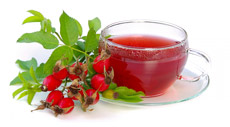
Nothing to say - the collection is wonderful. It seems that the "ulcers" know him and have long appreciated him. Its price is no different from the cost of other medicinal teas (990 rubles, 360 thousand, 360 hryvnias), making gastric tea according to the monastery recipe is as simple as others, however, everything is written in the instructions in one sentence.
Monastic tea and osteochondrosis
The doctor's opinion that osteochondrosis can be cured by collecting plants really wants to be questioned. Undoubtedly - collection from osteochondrosis, having in its composition a well-chosen combination of herbs is able to stimulate microcirculation and metabolic processes in tissues and thus create the effect of pain relief, improve mobility in the joints, and at the same time - well-being and quality of life. It would be nice to drink monastic tea after traditional massages and exercise therapy for the patient. After, but not instead of. Lying on the couch, drinking tea for osteochondrosis, you can never wait for any improvement.
They say that if you drink monastic tea several times a day for 3 weeks, then the result is that an intervertebral hernia can “get scared” and go away. We explain: the drink is taken orally, it goes a long way, which will end faster than it will reach the intervertebral hernia. It will have to be treated conservatively as long as possible, or surgically removed, if, of course, it is operable.
To date, the Internet offers two recipes for monastic tea from osteochondrosis. The first one that came from the holy places of Russia, consisting of:
- Rose hips;
- Elecampane root;
- Hypericum herb;
- Herbs oregano;
- Black tea.
This drink for all diseases is prepared for the whole day: each herb - 2 tbsp. spoons of black tea - 2 teaspoons, elecampane with rose hips are boiled for 20 minutes, then the rest are added and infused for 1 hour, filtered. The brew is used as a regular tea, that is, you need to drink monastery tea 2-3 times a day, when "God puts it on your soul."
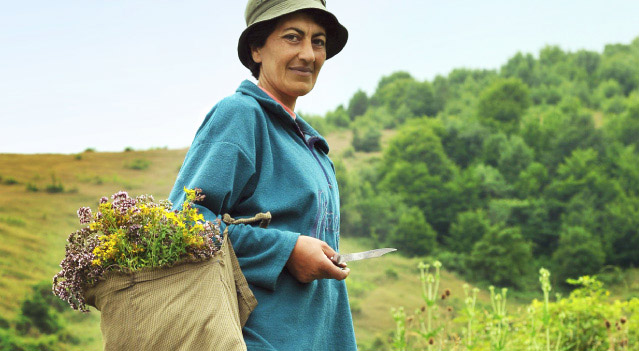
The origin of the second is again attributed to Belarus, its composition, as always, is wider:
- yarrow;
- Sage;
- Cowberry;
- burdock;
- Elecampane;
- Highlander;
- Birch (leaves);
- wild rosemary;
- Pine buds;
- St. John's wort.
How to make monastery tea is written in the instructions (a teaspoon is brewed in a glass of boiling water), and is used instead of the usual drinks - tea or coffee. It costs, like everyone else - 990 rubles.
Monastic tea from prostatitis: will a man feel strength and confidence?
In the hope of eliminating the problem common in the male environment - inflammation of the prostate gland (prostatitis), a strong half of humanity also turns to various methods of traditional medicine, among which monastic tea for prostatitis is currently leading. Here is its composition:

In this composition, mainly used anti-inflammatory, antibacterial, healing and improving metabolic processes in tissues properties listed representatives of the Belarusian flora. Many of these plants, being a pantry of useful substances (essential oils, vitamins, microelements, polysaccharides), entered the official pharmacopoeia and serve not only traditional medicine. However, in addition to the main advantages, some have serious contraindications. For example, licorice is able to retain fluid, lead to edema and raise blood pressure, which a person suffering from arterial hypertension will not need at all.
Probably, before you buy monastic tea, you should still first study its composition, the properties of its constituent components, familiarize yourself with contraindications (not whole tea, of course, because the instructions will indicate 100% harmlessness, but its components).
Monastic tea and climax
Often, with medicinal tea, it is advised to start the fight against the approaching menopause. Increased sweating, "hot flashes", irritability, sleep disturbance noticeably loosen the nervous system and reduce overall performance. Many women who take a herbal drink as a sedative experience a decrease in the manifestations of an unpleasant period and an improvement in well-being.

Medicinal tea consists of various parts of the following plants:
- Thyme;
- Sage (has a high estrogen-like effect);
- Rose hip;
- Hawthorn;
- Oregano;
- Fireweed;
- Calendula;
- St. John's wort;
- Stevia (honey grass).
However, it should be noted that the list of representatives of the flora may vary somewhat, for example, as part of the monastery collection used for menopause, you can find shepherd's purse, horsetail, yarrow, mint and other herbs.
Monastic tea and varicose veins
It is advisable to coordinate the treatment of varicose veins with monastery tea with a phlebologist. The doctor's opinion regarding the condition of the blood vessels and the degree of their damage is especially important, because in addition to the dilated veins that a person sees with the naked eye, there may be other, deeply hidden changes. You can not blindly believe that some kind of disease, including varicose veins, will go away without a trace.
Medicinal tea will help strengthen the vascular walls, normalize metabolic processes for a while, relieve soreness and swelling, to some extent reduce thrombosis, but it will not be able to solve all problems once and for all. It consists of:
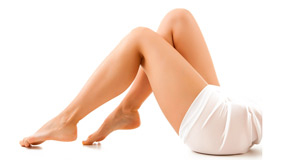
It should be borne in mind that a pathological change in blood vessels often concerns an elderly age, so one has to keep in mind concomitant diseases that may become a contraindication to the use of certain representatives of the plant world. Yes, and young people are not always all right, allergic reactions do not choose age.
So - let's sum up
Once on an advertising page dedicated to monastic tea, the reader will first of all receive information about the unsurpassed abilities of the drink and its absolute harmlessness. But, as the advanced youth says, “filter the market”:
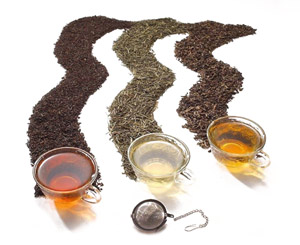
The question of how to order tea and not stumble upon a scam is up in the air. Each person must think and decide for himself, St. Elisabeth Monastery, to which all sites about teas refer, does not sell a drink on the Internet. He sells herbal preparations in a cafe located near the monastery (already ready-made). The only thing that can be advised to a buyer who doubts the authenticity of tea is to analyze the negative reviews on the forums. Believe me, they are, but not on the pages of a site selling tea.
Some complain that the tea ordered for 990 rubles comes for 1300 (delivery costs), others say unequivocally that it cannot help, others, to put it mildly, say: “To help monastic tea, you need to lead a monastic lifestyle.” Nevertheless, the most numerous part of the public confidently asserts: “A new, wonderful, curative for all diseases, effective weight loss medicine is the monastic tea for everything.” Our opinion - do not rush to extremes, treatment with monastic tea is auxiliary,














